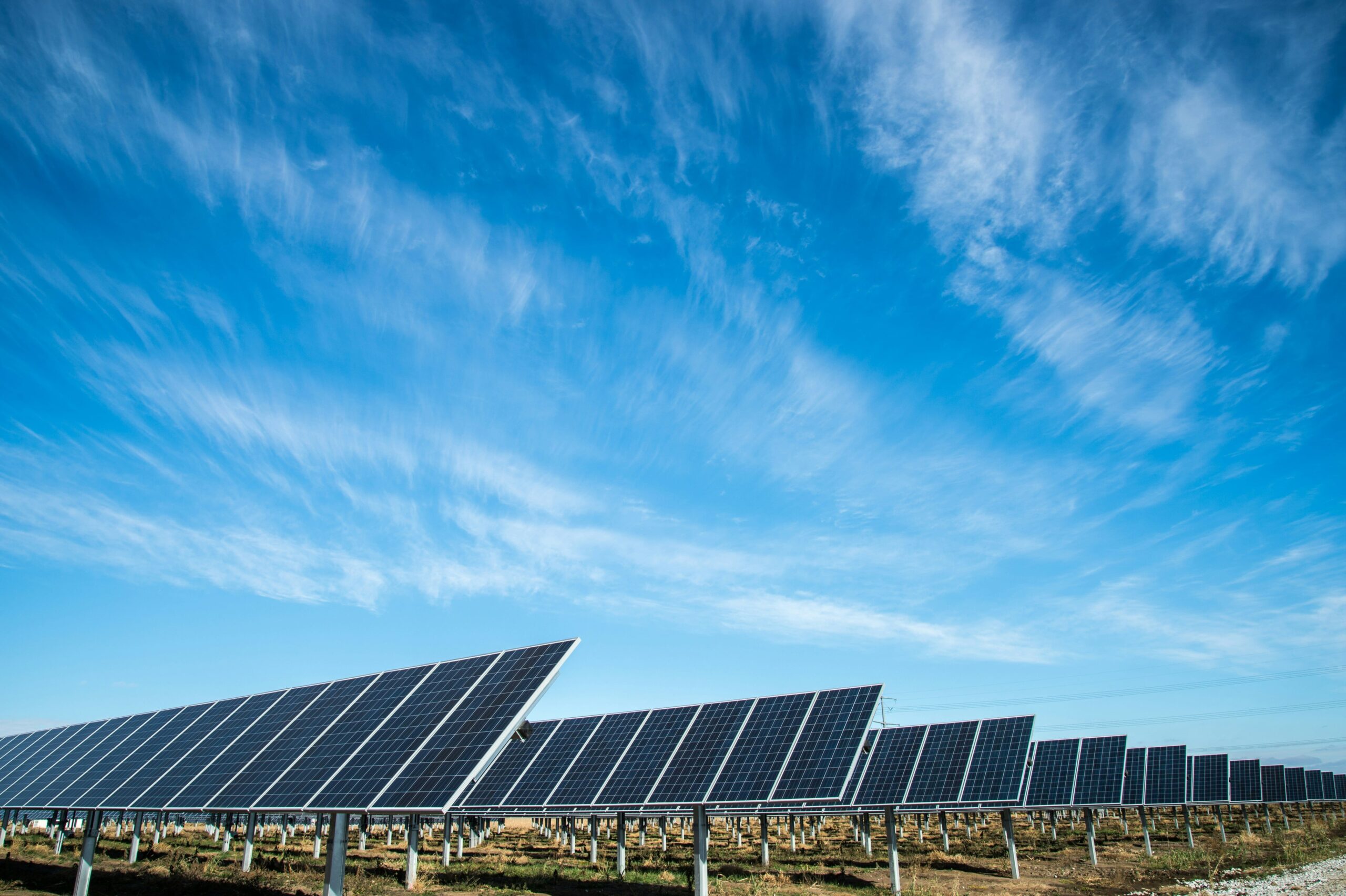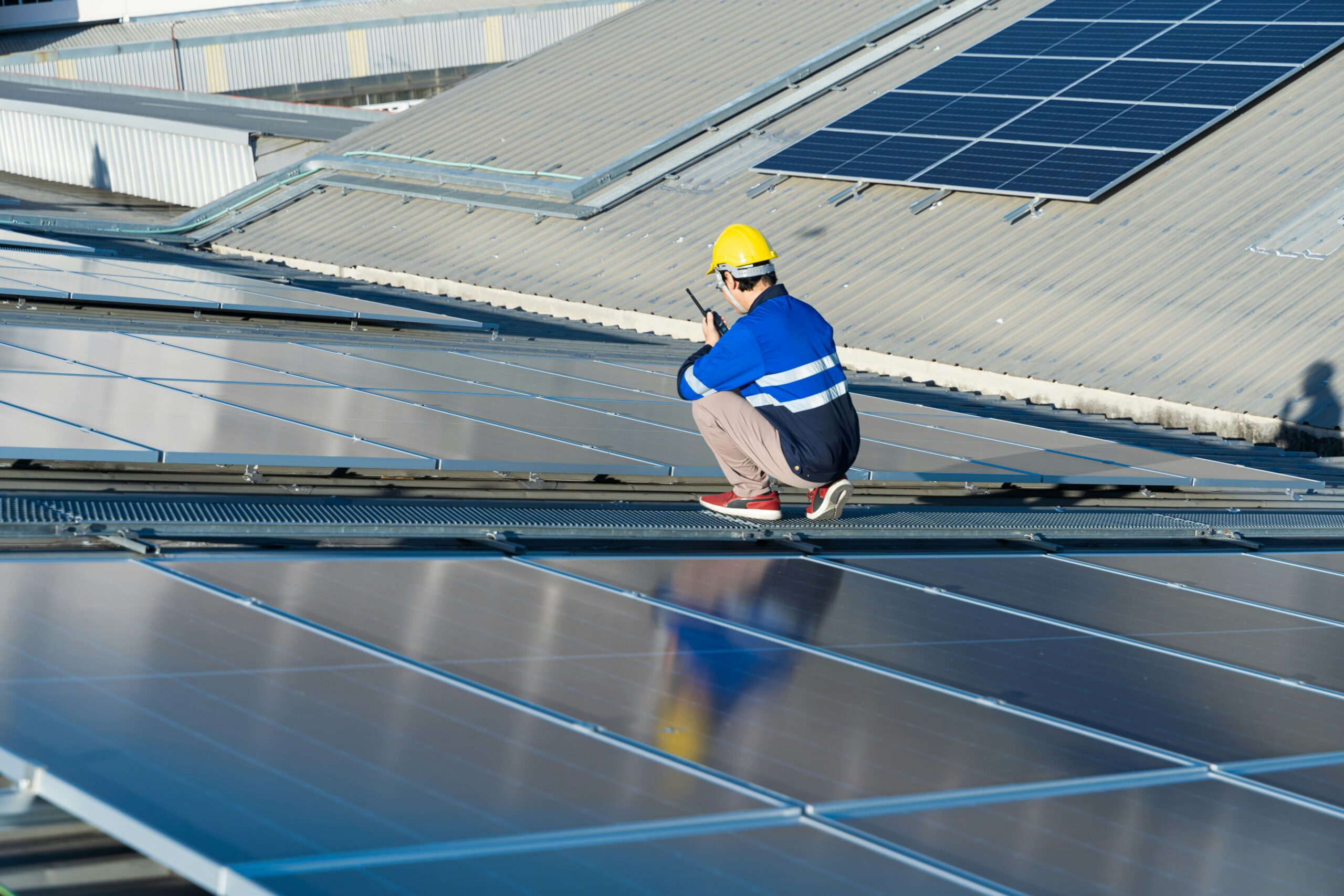
Solar photovoltaic (PV) panels deliver a host of financial and environmental benefits to businesses looking to reduce energy spending and shrink their carbon footprint. However, the efficiency, value, and performance of PV panels all decline with age. And in order to maximize the return on investment (ROI), it is important you understand how to account for solar panel depreciation in your bookkeeping. Knowing how to factor in depreciation also helps to minimize your tax liability while helping to preserve the potential resale value of your renewable energy investment.
This article offers a deep dive into what solar panel depreciation entails and why it matters. It also explores actionable strategies you can follow to optimize the economic value you get from your own solar PV investment.
What Is Solar Panel Depreciation?

Solar panel depreciation refers to the declining value of PV systems over time. This decrease in value manifests in two ways:
- Performance depreciation – i.e. the tangible decline in power output as PV panels age. This inevitable degradation is normally factored into the solar manufacturer’s warranty.
- Accounting depreciation – i.e. the practice of spreading the cost of an asset over its useful life for tax and financial reporting purposes.
For businesses, understanding solar panel depreciation is crucial for optimizing tax benefits, managing investment returns, and planning for future energy needs. This article focuses primarily on the accounting aspect and best to how leverage depreciation to enhance financial outcomes.
Why Solar Panel Depreciation Matters
Understanding solar panel depreciation is essential for businesses that invest in PV systems. This depreciation not only impacts financial bookkeeping but also plays a critical role in determining the true value of the investment over time.
Let’s delve into how depreciation directly affects two key areas: ROI and the resale value of solar assets.
Impact on ROI
Solar panel depreciation is a significant factor that influences the ROI of clean energy investments. By accounting for the gradual decrease in the value of PV systems, businesses can more accurately calculate their net profits from solar energy production. This process allows for strategic planning and financial forecasting, enabling investors to maximize the ROI of their investments. Properly managed, depreciation can lead to significant tax savings, effectively lowering the overall cost of your investment (while boosting the ROI).
Impact on Resale Value
Depreciation can also impact the resale value of solar panels. As PV modules age and lose efficiency, their market value diminishes. However, understanding and managing solar panel depreciation can help maintain a higher resale value. Regular maintenance and updates to the PV system can mitigate some of the effects of depreciation – preserving both the system’s efficiency and appeal to potential buyers. This attention to depreciation ensures that businesses can recoup a more substantial part of their initial investment if they choose to sell their solar assets at some later date.
Different Types of Solar Panel Depreciation
Understanding the different methods to calculate depreciation is pivotal for businesses. Although there are many different ways to calculate depreciation, two primary methods stand out: straight-line and accelerated depreciation. Each approach offers a unique way to account for the decrease in PV panel value over time:
- Straight-Line Depreciation offers a consistent method, spreading the cost of the solar asset evenly across its useful life. For PV panels, typically recognized as having a productive lifespan of around 25 to 30 years, this method simplifies financial planning by providing predictable annual depreciation expenses.
- Accelerated Depreciation allows businesses to write off a larger portion of the panels’ cost in the initial years following installation. Methods like the Modified Accelerated Cost Recovery System (MACRS) can significantly enhance tax savings in the early stages, reflecting the initial rapid depreciation in value. This method aligns with the quick drop in PV technology prices and the fast-paced advancements in solar energy.
Applying these depreciation methods to solar installations enables businesses to optimize their tax benefits and accurately reflect the panels’ diminishing value. The choice between straight-line and accelerated depreciation hinges on a company’s financial strategy and the specific goals of their renewable energy investment.
Understanding Factors Influencing Solar Panel Depreciation

Several key factors play a role in determining the rate at which solar panels, or PV modules, depreciate over time. These elements not only impact the financial valuation of the solar assets but also their performance and longevity.
- Technological Advancements can indirectly impact solar panel depreciation. As newer, more efficient PV technologies enter the market, older systems can quickly become outdated, affecting their market value and appeal.
- Environmental Wear & Tear is an unavoidable reality for solar panels exposed to the elements. Factors such as extreme temperatures, hail, wind, and even salt mist in coastal areas can degrade the materials of PV modules, leading to a gradual decline in efficiency and value. Despite the robustness of modern solar panels, this physical deterioration is inevitable and mirrors the depreciation seen in other major assets like cars and manufacturing equipment.
- Maintenance Practices also influence the rate of depreciation. Regular cleaning and inspections can mitigate some efficiency losses, but they cannot halt the natural aging process of the solar panels themselves. Proper upkeep ensures that the modules continue operating at “peak” performance for as long as possible. However, depreciation from wear & tear and technological obsolescence remains a certainty.
This inherent depreciation underscores the importance of accounting practices in managing the financial aspects of solar investments. Recognizing and preparing for depreciation through strategic financial planning allows businesses to safeguard their investments and extract as much value as possible from their PV systems before they are decommissioned.
Calculating Solar Panel Depreciation for Tax Purposes

Calculating depreciation for tax purposes involves a few steps and takes into account the Modified Accelerated Cost Recovery System – alongside federal incentives such as the Investment Tax Credit (ITC) and bonus depreciation options.
Here’s a step-by-step guide:
- Investment Tax Credit: The ITC offers a 30% tax credit on the cost of your PV system. For a system costing $100,000, you get a $30,000 tax credit, directly reducing your tax bill.
- Adjust Depreciable Basis: After applying the ITC, adjust the system’s cost basis for depreciation. Since the ITC is 30%, you reduce the depreciable basis by half of the ITC value (to prevent double dipping into this benefit). For a $100,000 system, this means a $15,000 reduction, leaving an $85,000 basis.
- MACRS Depreciation: Depreciate this adjusted basis ($85,000) using the Modified Accelerated Cost Recovery System over five years. This method accelerates depreciation, offering larger tax deductions early on.
- Bonus Depreciation: In 2024 and beyond, you might be eligible for bonus depreciation, allowing an immediate deduction of the system’s cost in the first year, after ITC adjustments.
- Section 179 Deduction: This IRS stipulation allows businesses to fully expense the cost of the system in the first year, further reducing taxable income.
The above guide provides a simplified approach to PV panel depreciation. However, you should always consult with an experienced tax professional to ensure compliance with IRS reporting requirements.
Maximizing the ROI of your Solar Investment
To enhance the ROI of your PV system, consider these streamlined strategies:
- Monitor, Maintain, and Upgrade: Regular maintenance, including cleaning and inspections, along with timely upgrades of components like inverters, is crucial. Partnering with experienced providers like APC Solar ensures your system operates at peak efficiency, leveraging our expertise in both installation and ongoing maintenance.
- Apply for Tax Benefits and Subsidies: Capitalize on available tax credits, deductions, and incentives. Consulting with a seasoned tax professional can help you navigate the complexities of solar investment benefits, ensuring you fully take advantage of all financial opportunities.
- Salvaging Value Post-Depreciation: As your panels approach the end of their productive lifespans, consider selling, recycling, re-purposing, or donating them to maximize residual value and contribute to sustainability efforts.
Have Additional Questions about Solar Panel Depreciation?
Understanding PV panel depreciation is essential for maximizing investment returns and minimizing tax liabilities. This guide explored what solar panel depreciation involves, its impact on ROI and resale value, and how to calculate it for tax purposes. It also outlined strategies for enhancing the ROI of your clean energy investment.
If you’re looking to optimize the financial benefits of your own solar energy system, while ensuring compliance with tax regulations, consider reaching out to APC Solar.
Our clean energy experts can provide you with tailored advice and support, helping you to navigate the depreciation process effectively and optimize your solar investment’s value. Contact APC Solar today for a free consultation on how to get the most out of your commercial PV project.